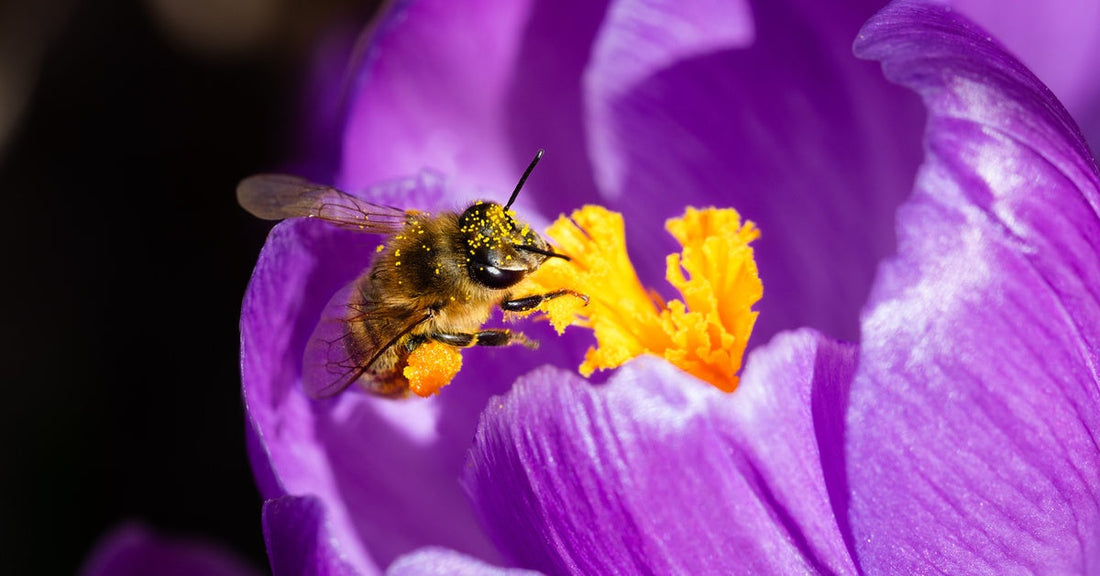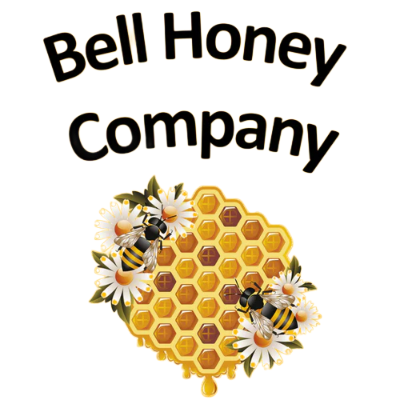
How the Plants That Bees Harvest Nectar From Affects Honey
Share
There’s nothing quite like the sweetness of drizzling honey over a warm biscuit or blending it into tea for a soothing moment of indulgence. But have you ever thought about the intricate process that leads to this perfection? How the plants that bees harvest nectar from affects honey is a fascinating topic that reveals how nature quietly shapes the flavors, colors, and aromas people savor.
Unique Honey Characteristics
When bees gather nectar from different plants, they bring back a little of each flower’s personality. This subtle influence shapes the honey in ways people can see and taste.
Color
Look closely at honey from a local farmers’ market; you might notice shades ranging from pale, white amber to a dark, rich brown. The color range comes from the plants that provide the nectar.
Clover honey has a light golden hue, while darker, earthy tones might come from plants like buckwheat. The variation doesn’t just look beautiful on your shelf. It also hints at flavor to come.
Texture
Texture plays a big role in how people enjoy eating honey. Some types of honey, like dandelion or eucalyptus honey, have a tendency to crystallize faster, resulting in a thick, creamy texture that feels luxurious and spreads like softened butter. Honey from plants like sage remains liquid for a long time, flowing freely and smoothly when poured.
Whether it’s creamy and spreadable or silky and pourable, every texture brings a different sensory experience. Drizzle it over pancakes, mix it into tea, or scoop a decadent spoonful straight from the jar.
Smell
Wildflower honey greets your senses with a floral fragrance that instantly evokes images of blooming meadows. Manuka honey, in contrast, has a deep, herbaceous scent with earthy undertones that hint at its medicinal qualities.
Clover honey is mild and carries a soft, sweet fragrance that is subtle yet comforting. Every time you open a jar, it’s like unwrapping a sensory gift from the bees, with each aroma painting a vivid picture of the flowers that contributed to its creation.
Flavor

The nectar of each plant weaves unique notes into the honey, creating a symphony of tastes that range from sweet and tangy to floral and bold. Orange blossom honey, for example, bursts with bright, citrusy flavors that feel like sunshine in a spoon, while sunflower honey imparts a warm, subtle nuttiness. Manuka honey stands out for its bold, almost medicinal intensity, softened by a gentle sweetness that makes it truly one of a kind.
Each spoonful is a journey through the plants and flowers that contributed to its creation, offering a taste of nature’s diversity in every drop.
Best Plants for Honey
The plants that bees harvest nectar from affect honey, so what are the best plant options? While bees technically can turn nectar from almost any flowering plant into honey, some plants shine above the rest in creating exceptional flavors. The following blooms inspire beekeepers and honey enthusiasts alike.
Clover
Perhaps the most classic option, clover honey offers a mild flavor balanced with light floral undertones. Its versatile taste makes it a favorite for drizzling on pancakes or stirring into oat milk lattes.
Dandelion
You could dismiss dandelions as mere weeds, but they’re actually a hidden gem in the world of honey production. Dandelion honey has a rich, golden color and a slightly tangy flavor that sets it apart. Its deep, earthy sweetness pairs beautifully with toasted bread spread with creamy butter or even paired with sharp cheeses.
Eucalyptus
With a herbal, slightly medicinal aroma, eucalyptus honey surprises the senses. It’s soothing and perfect for mixing into tea when you’re under the weather.
Manuka
Straight from New Zealand, manuka honey’s premium reputation matches its bold, earthy flavor with a touch of caramelized sweetness. It’s frequently sought after for its natural health benefits.
Orange Blossom
Sweet, zesty, and light, orange blossom honey carries the refreshing energy of citrus groves. It brings brightness to morning smoothies and creamy desserts.
Sage
Known for its slow crystallization, sage honey’s subtle, smooth flavor feels like a treat reserved for quiet moments. It works wonders drizzled over goat cheese or stirred into chamomile tea.
Sunflower
Golden and robust, sunflower honey offers a slight nuttiness. Its warm profile works well as an accompaniment to rich, aged cheeses or stirred into coffee.
Honeysuckle
With a name like honeysuckle, it’s no surprise this honey offers a delicate sweetness and floral essence. It elevates everything from cocktails to salad dressings.
Wildflower

Wildflower honey is like a kaleidoscope of all the blooms surrounding the hive. With a bouquet of unpredictable flavors, it’s nature’s own surprise version of honey. Each jar is truly one-of-a-kind.
Cultivate the Right Conditions for Quality Honey
Producing exceptional honey is a delicate balance of nature and nurture. While plants and flowers are vital for honey production, the care of bees, hives, and the surrounding environment is just as important. Every aspect affects the flavor, quality, and purity of the honey people enjoy.
Monofloral Honey
Some of the most prized types of honey come from monofloral sources, where bees primarily harvest nectar from one type of plant. Beekeepers strategically place hives near fields of clover, eucalyptus, or other specific blooms to craft monofloral honey with a consistent and distinct flavor profile.
Nurtured Hive
Healthy bees mean better honey, plain and simple. Beekeepers nurture their bees, protecting the hives from pests, so bees have access to enough food during off-seasons. Happy, healthy bees work harder to produce the honey you love.
No Chemicals
The absence of pesticides and chemicals not only protects the bees but also ensures the purity of the honey. Organic or chemical-free beekeeping practices make a noticeable difference in both quality and safety.
Enjoy the Sweet Taste You Love
The next time you enjoy a spoonful of honey, you’ll know it’s more than just a sweet treat. It’s a product of artistry, collaboration, and care from the hardworking bees gathering nectar from the plants.
If you’re ready to enjoy honey crafted in the best possible conditions, turn to bulk honey suppliers like Bell Honey. When you choose honey shaped by floral diversity and cultivated by dedicated beekeepers, you’re not just tasting something delicious. You’re experiencing nature’s finest work.
